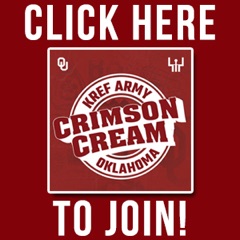
If boosters are paying players, who will pay the schools?
Ever since college athletes were granted the ability to profit off their name, image and likeness rights, the NCAA has taken a hands-off approach to the gray space between NIL deals and recruiting. Guidance issued Monday by the organization supposedly represents a new orientation towards enforcing its rules against using inducements to secure the services of high school players and those in the transfer portal.
You can read the guidance for yourself to get an idea of how the NCAA plans on policing the so-called collectives pooling money to recruit players under the guise of NIL deals. Truthfully, the “how” doesn’t matter nearly as much as the “why.”
Why would schools want to ban collectives?
You could argue that it’s not a zero-sum game, but the fact of the matter is that inducement NIL deals essentially force schools and players to compete for the same pot of booster money. The more money boosters invest in collectives to acquire talent, the less they have to spend on donations to their favorite schools and their athletic departments.
There are other possible reasons like the chaos wrought by the influence of NIL deals or a desire to keep athletes in revenue-producing sports under the thumb of the schools. Ultimately, however, schools want to control the money.
Don’t some schools gain a competitive advantage through NIL collectives?
Yes, they did – past tense.
Some booster groups that organized quickly – groups attached to schools like Texas and Texas A&M, for instance – saw their squads thrive in football recruiting this year. Anecdotally, John Ruiz’s financial commitments to NIL deals for Miami Hurricanes players seem to have lifted The U’s fortunes in the basketball transfer portal.
Keep in mind, however, that nothing is stopping boosters at other schools from forming their own NIL collectives. In fact, they are becoming standard practice at every major program. That means the competitive edge gained by early movers is vanishing.
OK, but what about the programs with the wealthiest collectives?
I’ll answer a question with a question: If all the schools form their own collectives, what will that change about the end results in recruiting? The programs at the top of the food chain already have the biggest war chests and the most committed fans.
Put another way, assuming every school has a collective operating at its expected capacity, the changes in the recruiting landscape would be minimal. A small number might see their recruiting performance rise or fall. In the end, though, the arms race among collectives would play out much like the arms race in facilities now.
Note that Jere Morehead, president of the University of Georgia, is the first person quoted in the NCAA release on the new guidance. Morehead is talking about “improper behaviors” in the NIL environment today. The Bulldogs just won a national championship in football, and their boosters have the means to build one of the most formidable collectives in the sport. That should tell you all you need to know.
Aren’t the boosters contributing to these collectives going to be pissed?
Some boosters may get heated if they pinned their hopes on collectives helping lead their favorite teams to respectability. Others might be convinced that collectives helped their programs more than others because their boosters aren’t willing to pay players under the table. (It’s probably worth mentioning that the schools with the most aggressive collectives seem to fall under the heading of “underachievers” or “former powers.”)
And in truth, the schools are probably doing boosters a favor by banning collectives. It doesn’t take a genius to see how the explosion of collectives quickly turns into an arms race in fundraising. Bagmen paying recruits under the table is almost certainly going to be easier on everyone’s wallets.
And if that money is really burning holes in boosters’ pockets, they could always donate it to the athletic department. See how that works?
Plenty of people involved in the NIL market think the NCAA’s announcement will barely make a dent in all the action.
I’d simply point out that many people who hold that opinion are profiting off the NIL system as it currently functions. They have every reason to promote the idea that collectives will be table stakes for boosters who want to ensure their favorite teams stay competitive.
Then bring on the lawsuits.
Indeed. I’m not a lawyer, but that seems like a lock.
Anything else?
Yes. Stop thinking about this situation in terms of individual schools and their ability to compete in the marketplace for talent. The people who run college sports think like a cartel. To them, booster collectives offer nothing but downsides: less control, less money and more pressure to perform despite the competitive landscape remaining status quo.
